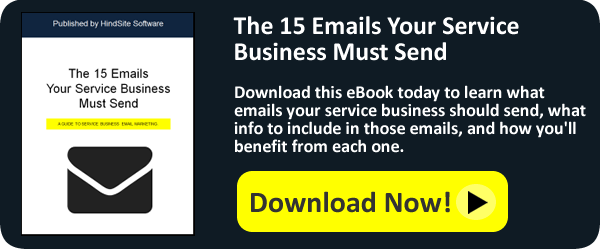By David Crary
Email marketing is one of the most cost effective methods of reaching your customers. However, it should be done with thought and consideration of who you are trying to reach and with the most effective, tailored message. The best way to target market you email list is by segmenting it based on what you know about the customer. Targeted messages can yield higher response rates which brings you more business.
 To help you think about how to effectively email, here are 8 ways to segment your list:
To help you think about how to effectively email, here are 8 ways to segment your list:
- Customer vs. Prospect: If they have bought from you, they are a customer. All others are prospects. Time to send the prospects a special incentive to order. Perhaps it is a coupon for a free estimate along with $xx off their first month of service. One free snow plow with a season-long contract. A free gift with first order. Incentives are limitless. Think creatively but keep it simple so it's easy to manage and doesn't cost you more than it's worth.
- Geography: Maybe you offer pest removal services across a major metropolitan area. You may know that a certain pest is more active in a specific area. By only targeting that area with your pest removal promotion, you can specifically mention the pest and have a more relevant message.
- Type: Is your customer a residential or commercial business? Segmenting your email list by which type will allow you to be more targeted. The commercial customer wants information on volume discounts, service level options and testimonials from other commercial properties. The residential customer wants a simple agreement on when and how much the field service will cost.
- Dollars: Segmenting your file based on how much the customer has spent with you (can use last 12 months, can use lifetime) will allow you to speak to your high volume customers differently than the customer that has only spent a few dollars with you. Perhaps the high dollar customer can be invited to provide referrals or invited to be part of a “customer insight group” to provide valuable feedback to your organization. The high dollar customer can likely be emailed more often than the low dollar customer. Watch your delivery, click through, open and unsubscribe rates to be sure that things are in check when increasing email frequency.
- Buying Frequency: How often does the customer buy from you? Is it one time/year or multiple times? If a customer purchases from you rarely, consider sending them a highly relevant offer for a related service. If they purchase from you all the time, it's probably worth scaling back your emails (because they are going to buy regardless, right?).
- Buying Recency: When did the customer last order? Grouping your file by months of recency can be very helpful. In traditional direct marketing for consumers, recency is king. The more recent the purchase the more likely they are to buy again. Hit them while they are hot. However, in the business-to-business environment it might not follow the same cycle. The irrigation customer in Wisconsin, will likely not be buying except during the season. But don’t let them fall off your email list. Send them something of relevance during the down time so your company is top of mind when service renewal time comes in the spring.
- Referral Status: If a customer has referred your business to a friend, be sure to have this marked on their customer record. Use your field service software for this indicator. Segmenting your email list by referral status will allow you to acknowledge their kind efforts and perhaps get more referrals in the process.
- Review Status: If a customer has written an online review for your company, this should be marked on their customer record and you can email accordingly. If they're vocal and happy, try to get them into a pool of customers to follow-up with and see if they want to contribute a video testimonial based on their experience with your business.
Once you have given some thought to your segmentation, you can combine the various elements. For example, you may want to group commercial customer that has bought within the last 12 months, spent over $5000 and ordered 4+ times. These would be coded as one segment and emails deployed to them. Be sure to have everyone fit in one segment. Start the process, build some benchmarks and see where your opportunities are. Keep it simple to start as you won’t get much out of deploying a segment size of 5 emails. Those results aren’t going to be a valid sample size for benchmarking.
Want some more service business email marketing tips? Check out our free eBook, The 15 Emails Your Service Business Must Send, today!








